Decline Barbell Bench Press Best Guide: Benefits, Muscles Worked and Technique Tips
This extensive guide will teach you everything you need to know about the decline barbell bench press.
What is The Decline Barbell Bench Press?
This is an effective exercise that you can use to target your chest muscles.
This exercise is a compound movement, meaning it works multiple muscle groups simultaneously. The decline barbell bench press also has a secondary effect on your shoulders and triceps as well, but again, the primary focus is on the pectoral muscles.
The exercise differs from the regular barbell bench press by requiring you to lie down in an inclined position with your feet raised up off of the floor (you can rest them on another weight bench or other sturdy object if you don’t have something tall enough).
- What is The Decline Barbell Bench Press?
- What Muscles Does The Decline Barbell Bench Press Work?
- How to Decline Barbell Bench Press (Best Technique)
- What Muscles Does The Decline Barbell Bench Press Work?
- What are The Benefits of The Decline Barbell Bench Press?
- Decline Barbell Bench Press Common Mistakes
- Decline Barbell Bench Press Variations
- Decline Barbell Bench Press Alternatives
- Decline Barbell Bench Press Sets and Reps
- How Wide Apart Should My Hands Be for The Decline Barbell Bench Press?
- What Grips Can You Use For The Decline Barbell Bench Press?
- How to Set Your Feet Up For The Decline Barbell Bench Press
- Tips to Help Improve the Lock Out Part of The Decline Barbell Bench Press
- How Much Should I Arch My Back During The Decline Bench Press?
- How Can You Do The Decline Bench Press Without A Spotter?
- How to Decline Bench Press Alone in A Power Rack
- How to Breathe During The Decline Bench Press
- Best Safety Tips for The Decline Bench Press
- What to Do if You Get Stuck During The Decline Bench Press
- Why Do My Wrists Hurt During Decline Bench Press?
- How Do You Make The Decline Bench Press Harder?
- How Do You Make The Decline Bench Press Easier?
- Is The Decline Bench Press Suitable for Beginners?
- Can You Build Muscle With The Decline Bench Press?
- Can You Build Strength With The Decline Bench Press?
- Flat vs Decline Bench Press: Which is Better?
- Learn More
What Muscles Does The Decline Barbell Bench Press Work?
The exercise that targets the chest, front shoulders and triceps. While it doesn’t directly engage the traps, they are involved in stabilizing the movement and distributing force throughout your body.
The primary muscles that it works are the —pectorals (chest), front deltoids (front shoulders) and triceps—and secondary muscles such as core, lats and forearms.
How to Decline Barbell Bench Press (Best Technique)
Firstly, set the bench to a 30-degree angle:
- Lie back on the bench, with your feet hooked into the supports.
- Inhale and brace your core, grip, quads and glutes.
- Hold the barbell with hands wider than shoulder-width apart, and lift it off the rack. Balance and stabilise the weight
- Lower it to your chest and then push it back up to its starting position.
- Exhale.
- Repeat for the desired number of reps.
What Muscles Does The Decline Barbell Bench Press Work?
This type of press is a great exercise that works the upper chest, front shoulders and triceps. In addition to this, it also works your core muscles as you have to brace yourself for each repetition.
- Main muscles used: Pecs (chest), Shoulders (front), Triceps
- Secondary muscles used: Core, Lats (Latissimus dorsi or back muscle) Forearms & Biceps
What are The Benefits of The Decline Barbell Bench Press?
The exercise works and builds strength, power and size in your chest, shoulders and triceps.
Build shoulder strength with Shrugs
It also works all three heads of the deltoid (front, side and rear) as well as the upper pecs, lower pecs and anterior delts. This makes it an ideal exercise for bodybuilders who want to develop their chest muscles quickly.
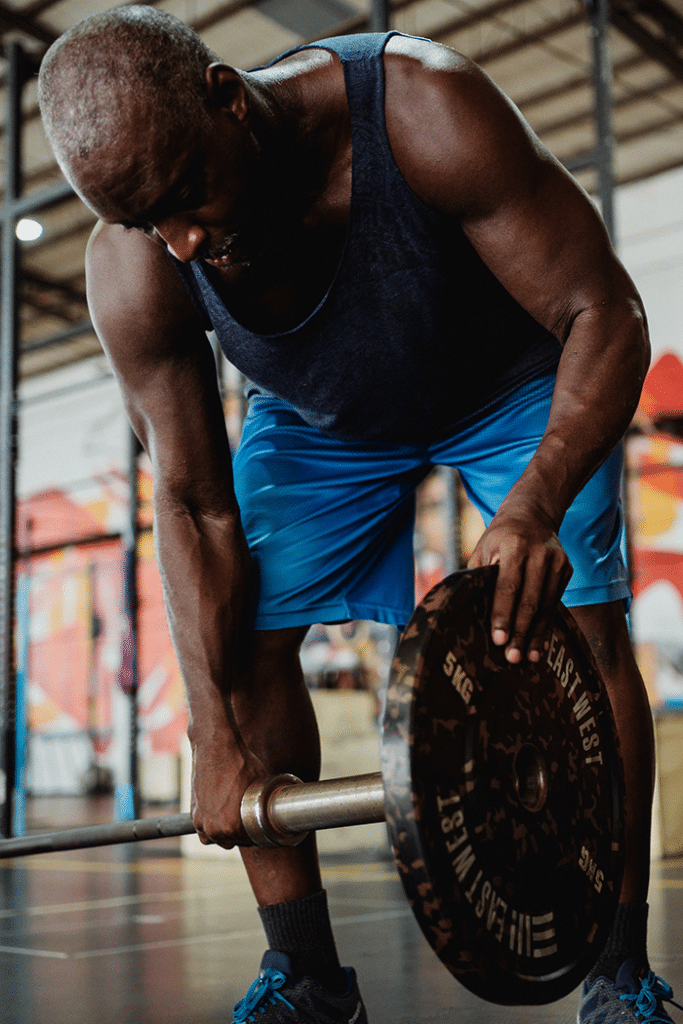
For those who have trouble getting started at the bottom of a standard barbell bench press due to shoulder injury or mobility issues, performing this exercise on a decline bench is an excellent alternative because it switches up the angle and pressure on your shoulders.
Decline Barbell Bench Press Common Mistakes
Make sure you aren’t making any of these mistakes.
Lifting the Head
Lifting your head off the bench and looking up can put a lot of strain on your neck, so make sure to keep it down.
Partial Range of Motion
If you’re not using a full range of motion when doing this exercise, then it’s not as effective as it could be. Your elbows should be perpendicular with the floor when in position, which will ensure that all muscle groups are being worked properly and fully stretched out during each rep.
Racking from an Awkward Height
Having the bar at the correct height is necessary for safety reasons; if it’s too high or low relative to where your chest is positioned on top, then there’s an increased risk for injury when performing this exercise.
This is because it puts additional strain on certain areas like shoulders or back muscles during the racking and unracking parts of the exercise.
Decline Barbell Bench Press Variations
If you are looking for an alternative to the decline barbell bench press, there are many options. Here is a list of some of the most popular variations:
- Decline Dumbbell Bench Press
- Smith Machine Bench Press
- Decline Barbell Bench Press Grip Variations (close grip, wide grip)
- Decline Barbell Bench Press with Chains / Bands (you can do this without chains or bands on any flat or incline bench press)
Decline Barbell Bench Press Alternatives
In case you’re not a fan of decline barbell bench presses, there are many other options that can help you work your chest. Here are a few alternatives to try:
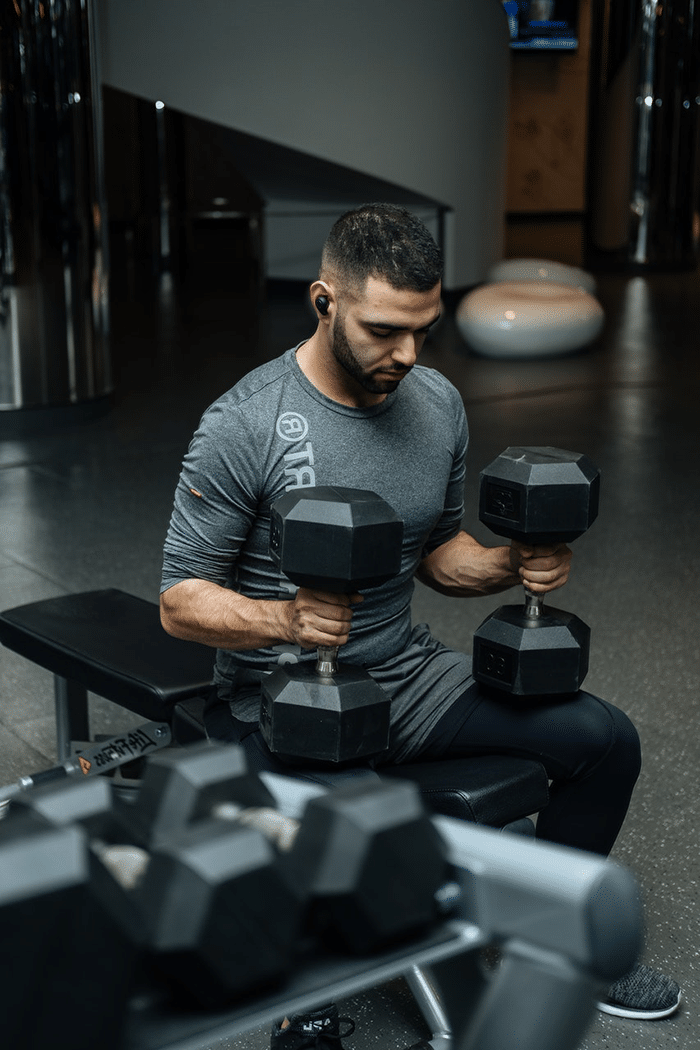
- Dumbbell Bench Press
- Incline Barbell Bench Press
- Incline Dumbbell Bench Press
- Smith Machine Bench Press
- Chest Dips (with or without an assisted machine)
Decline Barbell Bench Press Sets and Reps
It is a great exercise for building muscle and strength.
Build Muscle
If you want to build muscle, you should perform 3-5 sets of 8-12 reps.
Develop Strength
If your goal is to increase strength and stamina, then perform 3-5 sets of 4-8 reps.
How Wide Apart Should My Hands Be for The Decline Barbell Bench Press?
Slightly wider than shoulder width is a great place to start.
The narrower the grip, the more you will incorporate the triceps. The wider the grip, the more you target the chest. However, the wider the grip, the less the range of motion, so you will get less bang for your buck.
However, you should experiment with both grips and find out what works best for you and your anatomy.
What Grips Can You Use For The Decline Barbell Bench Press?
All the grips below can be used.
The thumbless grip is not recommended for no-advanced lifters, as it creates less control on the barbell.
- Pronated (Overhand) Grip
- Supinated (Underhand) Grip
- Medium Grip
- Wide Grip
- Close Grip
- Narrow Grip
- Shoulder Width Grip
- Standard Grip
- Thumbless Grip
How to Set Your Feet Up For The Decline Barbell Bench Press
You need to hook your feet into the pads on the specialised decline bench equipment.
This will stop you sliding back and down off the bench.
Tips to Help Improve the Lock Out Part of The Decline Barbell Bench Press
Work on Tricep Strength and Power
Stronger triceps will help you nail the lock out every time!
Use the pin press, close grip bench or floor press to develop excellent lock out strength that will transfer over to the decline variation.
Use a Full Range of Motion
By using as much of your arm’s range of motion, you’ll be able to get more muscle involved.
This can help you avoid locking out with just your pecs and leave them vulnerable to injury. A full range also allows for better activation in the triceps, which is critical to building up that lockout strength!
How Much Should I Arch My Back During The Decline Bench Press?
- Keep your lower back flat on the bench.
- Don’t hold the bar too close to your face.
- Don’t bounce the bar off of your chest.
- Don’t lock or hyperextend your elbows at the top of each rep.
- Make sure that you don’t let your wrists bend backward when locking out, either—this is called wrist hyperextension and it can be very painful and lead to long-term injuries if not treated properly!
How Can You Do The Decline Bench Press Without A Spotter?
If you are looking to do the press without a spotter, there are some safety precautions and tips that you will need to be aware of.
The first thing that you will need to do is make sure that your bench has been set up properly on your power rack or Smith machine.
The height of the rack should be adjusted so that when you lie down on it, your upper chest touches just barely above where your lower chest is when standing upright. This way if something were to happen and drop from overhead during exercise (which can happen sometimes if using an adjustable pin), then there would still be enough space for air or blood flow in order for this not to be dangerous for the person exercising.
Make sure not to position yourself too low or too high; most injuries occur because people take risks like these with their bodies!
How to Decline Bench Press Alone in A Power Rack
Set the safety bars in a power rack.
Position your feet up for the press.
Take the bar out of the power rack, and lift it off your chest during the press.
How to Breathe During The Decline Bench Press
In order to perform the press correctly, it is necessary to breathe in before lowering the bar, and breathe out after raising it.

This will help you to brace your body and maximise strength and power output.
It is next to impossible to lift with a weak, untensed core.
Best Safety Tips for The Decline Bench Press
The press is a great exercise for building up your chest muscles. However, it can be dangerous if you don’t perform the lift correctly. To ensure that you’re performing this exercise safely and effectively, consider the following tips:
Use a Spotter
If possible, get someone to help keep an eye on you during your set so they can assist in case of an emergency.
As an extra safety measure, try using a power rack with pins set at different heights—this will allow them to help with counting while also providing some protection against overload injuries such as torn pecs and biceps tendons.
Warm up Properly before Lifting Weights
A proper warm-up includes stretches and movements for both arms and legs along with light cardio exercises to elevate the heart rate; this helps prepare muscles for heavier activity without risk of injury later down the line when fatigue sets in more quickly due to improper preparation beforehand.
What to Do if You Get Stuck During The Decline Bench Press
If you can’t get back up, don’t panic. Hold the bar securely in place and call for help. Another lifter will then be able to assist and lift the barbell back to the rack for you.
Why Do My Wrists Hurt During Decline Bench Press?
One of the most common reasons for wrist pain is that the lifter is not straightening his or her arms out completely. If you are doing a press, it’s important to make sure that your wrists are straight and parallel with the floor.
Another option is to use wrist wraps when doing this exercise so as not to injure yourself while training with heavy weights.
Dedicated strength work for the wrists is also advisable, and can have excellent pay off in the long run.
Other reasons why people experience pain during this exercise include: different grip position or angle; using a different type of barbell (flat or Olympic); and improper form due to fatigue after several sets without resting properly between them
How Do You Make The Decline Bench Press Harder?
- Use a close grip
- Use a wider grip
- Use a wider stance
- Use a closer stance
- Reduce the range of motion of the press
- Use a pause at the bottom of the movement (useful for overloading)
- Use a pause at the top of the movement (useful for overloading)
- Chains
How Do You Make The Decline Bench Press Easier?
If you are a beginner and find the exercise too difficult, here are some ways to make it easier:
- Lower the weight by about half or even more, depending on your strength level.
- Use dumbbells instead of a barbell for better control over the lower range of motion where most people struggle with this exercise.
Is The Decline Bench Press Suitable for Beginners?
The decline press is one of the most popular exercises among strength trainers. But should you try it?
Well, it depends on your fitness level and specific goals.
The main function of a bench press is to engage your chest muscles, but it also involves other upper body muscles like those in the shoulders and triceps. The decline variation places more stress on the lower part of these areas since the angle puts more pressure on them than when they are working flat on a bench (or floor).
So, if you’re looking to build up those areas, then yes; however, if that’s not what you’re interested in doing then maybe not so much.
Can You Build Muscle With The Decline Bench Press?
Yes. It is a shoulder and chest exercise that targets your triceps, pectorals, anterior deltoids and serratus anterior and is an excellent way to build upper body muscle.
The movement also strengthens your core muscles and upper back muscles. There are three main types of bench presses: flat, incline and decline. All are great ways to stimulate hypertrophy.
Can You Build Strength With The Decline Bench Press?
Yes, this type of bench press is a good exercise to build strength with.
It is an excellent tool to include in any dedicated strength training program.
Flat vs Decline Bench Press: Which is Better?
The two exercises are very similar, but each has its advantages depending on your goal.
If you’re looking to build power and strength, the flat bench press will serve you better than the decline. The higher starting position of the barbell allows for more weight to be lifted with each rep, which is why it’s a more common exercise in powerlifting competitions.
The flat bench press is also great for targeting your middle pecs, while the decline focuses on strengthening your lower chest muscles (pectorals). While this can be beneficial if you’re interested in showing off a bit more definition in that area, it’s not essential: It simply adds another dimension of muscle tone to an already strong body part.

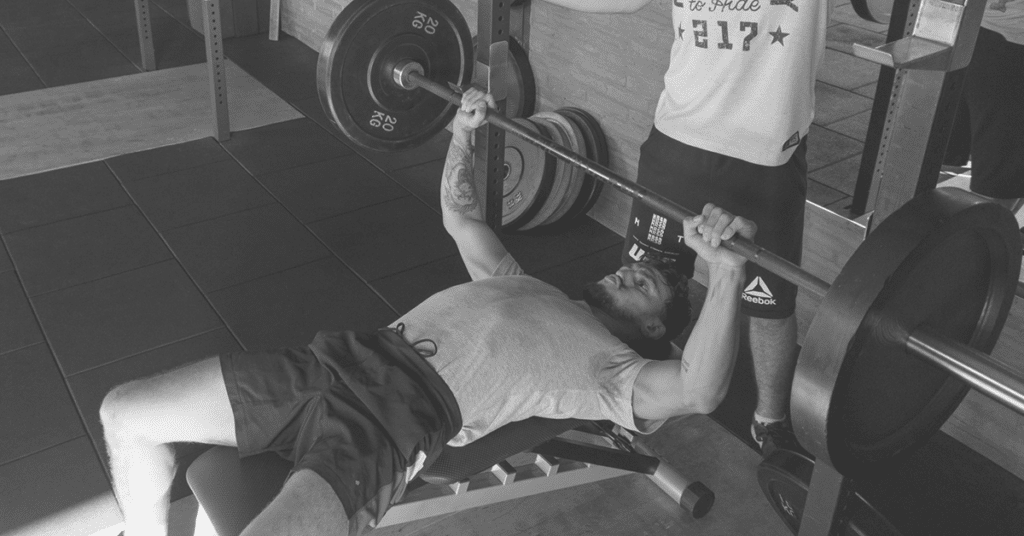
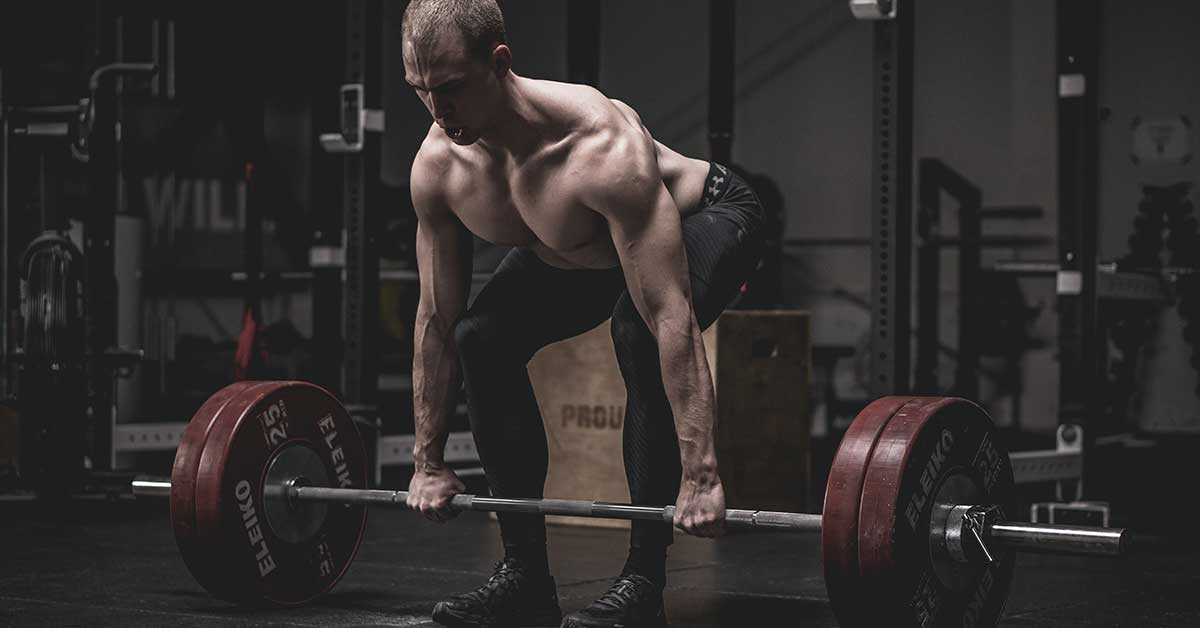

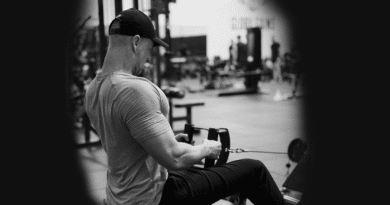
Pingback: Dumbbell Push Press Best Guide - Benefits, Muscles Worked and Technique - Outdoor Fitness Society